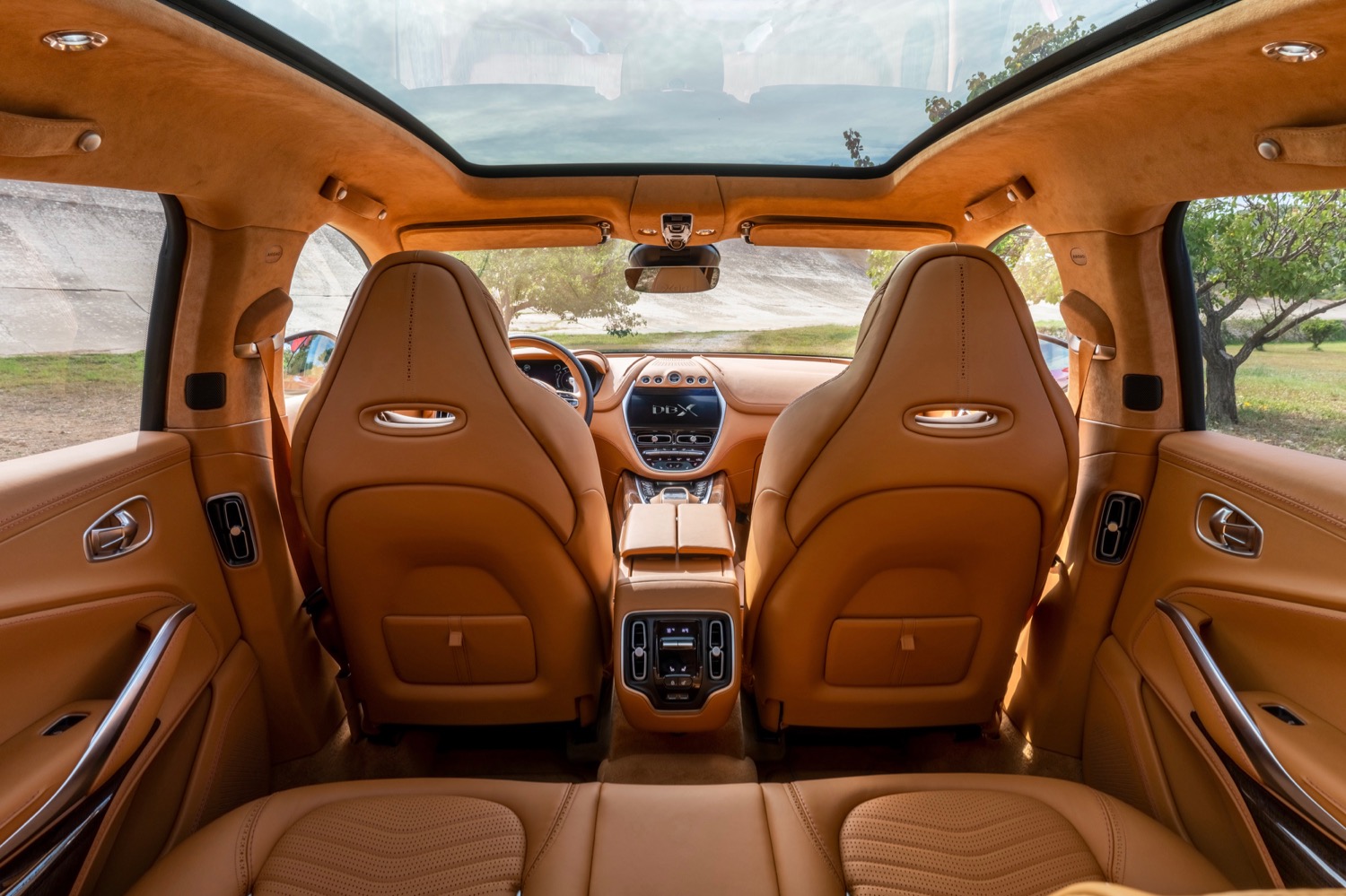
With Bentley, Lamborghini, and Rolls-Royce launching SUVs, it was only a matter of time before Aston Martin followed suit with one of its own. The Aston Martin DBX has been teased for the past few months and, while Aston isn’t ready to reveal it yet, we do know how much it will cost. Pricing will start at $189,900 when order books open later this month. Aston also revealed details of the DBX’s interior.
The base price puts the DBX at the low end of Aston’s lineup, in the same ballpark as the Vantage but below the DB11 and DBS Superleggera. While most customer cars will likely sell for a higher price thanks to optional extras, the base price is also relatively tame for a super SUV. The DBX will cost more than a base Bentley Bentayga, but less than high-end W12 models. It will also likely undercut the Rolls-Royce Cullinan and Lamborghini Urus. But with 670 horsepower and a base price of $163,510, the Porsche Cayenne Turbo S E-Hybrid looks like a bargain compared to all of these SUVs.
Aston believes wealthy customers will prefer sitting behind the wheel of a DBX over any other high-end SUV. The interior was designed to accommodate a wide range of body types, according to Aston. Engineers and designers spent six months on the driving position alone, Aston claims. The company also invited children to test out the rear seats during development. That attention to detail will yield class-leading front and rear legroom, Aston boasts. While it’s hard to tell from the camouflaged prototypes Aston has running around, the DBX was also designed with expansive side windows to create a feeling of spaciousness, and help give the driver greater outward visibility.
Aston didn’t offer much detail on tech, but a lone interior photo shows a central touchscreen and a digital instrument cluster. The controller for the screen looks a bit like Mercedes-Benz’s trademark touchpad and click wheel combo. Aston borrows engines and electronics from Mercedes, so it’s entirely possible the DBX will use an infotainment system sourced from the German automaker.
We already know the DBX will have a Mercedes engine. It will have the same 4.0-liter, twin-turbocharged V8 used in various Mercedes-AMG performance models, as well as the current Aston Martin Vantage and DB11. In the DBX, the V8 will be tuned to produce 542 horsepower and 516 pound-feet of torque. The top speed hasn’t been finalized, but Aston claims the DBX has hit 180 mph in testing. For reference, the current SUV speed king is the appropriately named Bentley Bentayga Speed, which tops out at 190 mph.
The Aston Martin DBX will be revealed in Beijing on November 20. Order books for Aston’s first SUV will open that day. Aston is bucking tradition in myriad ways, with plans to launch its first electric car and first motorcycle alongside the DBX.


